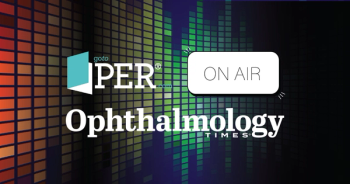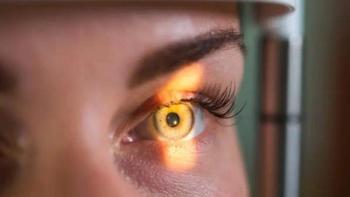
According to the company, its data replicate and expand upon the potential of ER-100 to improve retinal ganglion cell function and restore visual function in a nonhuman primate model of nonarteritic anterior ischemic optic neuropathy.

Atsena Therapeutics and Nippon Shinyaku enter exclusive license agreement for ATSN-101

According to the company, its data replicate and expand upon the potential of ER-100 to improve retinal ganglion cell function and restore visual function in a nonhuman primate model of nonarteritic anterior ischemic optic neuropathy.

The retina is a key proving ground for long-held theories of genetics.

In data presented at the 128th annual meeting of the American Academy of Ophthalmology in Chicago, the two-year study finds patients with advanced disease can recover some vision.

Researchers at the Karolinska Institute continue to investigate whether gene therapy can improve vision in people with Bothnia dystrophy, a form of hereditary blindness, prevalent in the region Västerbotten in Sweden.

According to research conducted by investigators at the Perelman School of Medicine at the University of Pennsylvania School of Medicine, patients with a rare inherited disease affecting their sight experienced quick vision improvements that sustained for the full year-long study.

Research by investigators at Trinity College in Dublin shows how the gene therapy conferred significant benefit in animal models, and in human cells derived from people with glaucoma.

The one-time intravitreally delivered gene therapy is for the treatment of retinitis pigmentosa (RP).

In this PER On Air Ophthalmology Times podcast, an expert panel discusses the latest advances in X-linked retinitis pigmentosa and how to optimize diagnosis as well as developments in gene therapy.

The product candidate is a modifier gene therapy for broad retinitis pigmentosa indication.

According to the company, the priority review voucher would be issued upon approval of ATSN-201, a gene therapy product candidate.

The program is for candidate OCU400, a modifier gene therapy product candidate.

Researchers note work may lead to targets for conventional outflow pathway therapies.

According to the company, OCU410 utilizes an adeno-associated virus platform for the retinal delivery of the RORA gene.

AAV204 is a novel adeno-associated virus (AAV) capsid from the AIM capsid library licensed by Abeona from the University of North Carolina at Chapel Hill.

The funding will go toward the continued clinical development of the company’s lead asset, AGTC-501 (laruparetigene zovaparvovec)

Phase 1 multicenter study demonstrates early signs of efficacy.

OCU410ST is a modifier gene therapy candidate being developed for Stargardt disease, which affects approximately 100,000 people in the United States and Europe combined.


The IND approval will allow the company to initiate a Phase I/IIa clinical trial for its gene therapy treatment targeting wet Age-related Macular Degeneration (AMD) including Polypoidal Choroidal Vasculopathy (PCV).

Ocugen is developing OCU410 as a 1-time gene therapy for the treatment of geographic atrophy. It utilizes an AAV delivery platform for the retinal delivery of the ROR Related Orphan Receptor A gene.

Prevent Blindness provides free resources on Stargardt disease, including a webpage, fact sheets, expert interview video and social media graphics, to educate the public and professionals on the inherited retinal disease.

Researchers note the G90D mutation in rhodopsin is known to produce background electrical noise to desensitize rods, but the nature of the ‘noise’ and its precise molecular source have not been resolved for almost 30 years.

Simply slowing disease progression is no longer enough.

Despite recognition of lenticular glutathione’s importance in lens formation for decades, why it declines with age remains a mystery.

The data will be presented in oral session at the 2024 American Society of Gene & Cell Therapy meeting May 7-11 in Baltimore, Maryland.